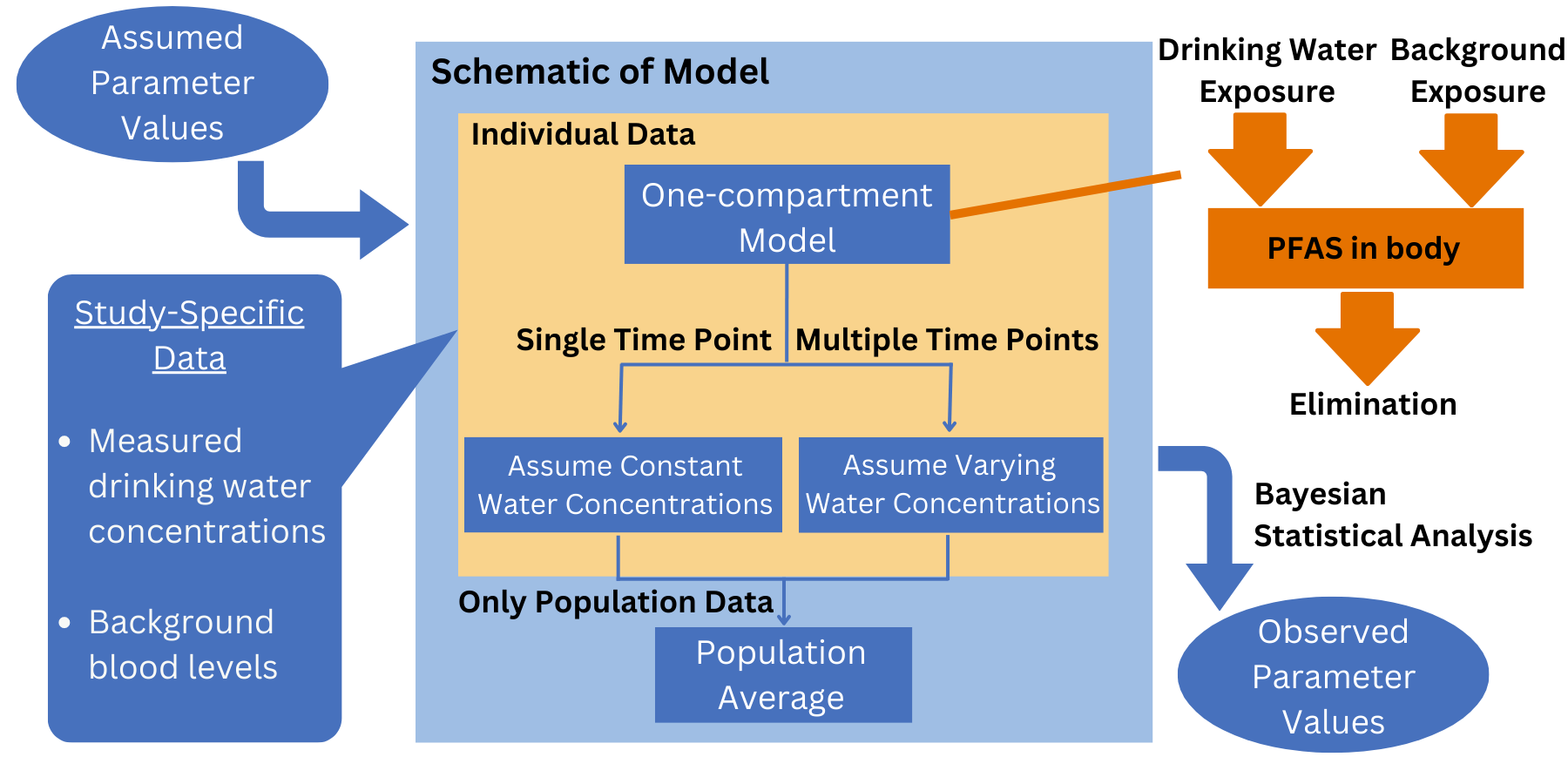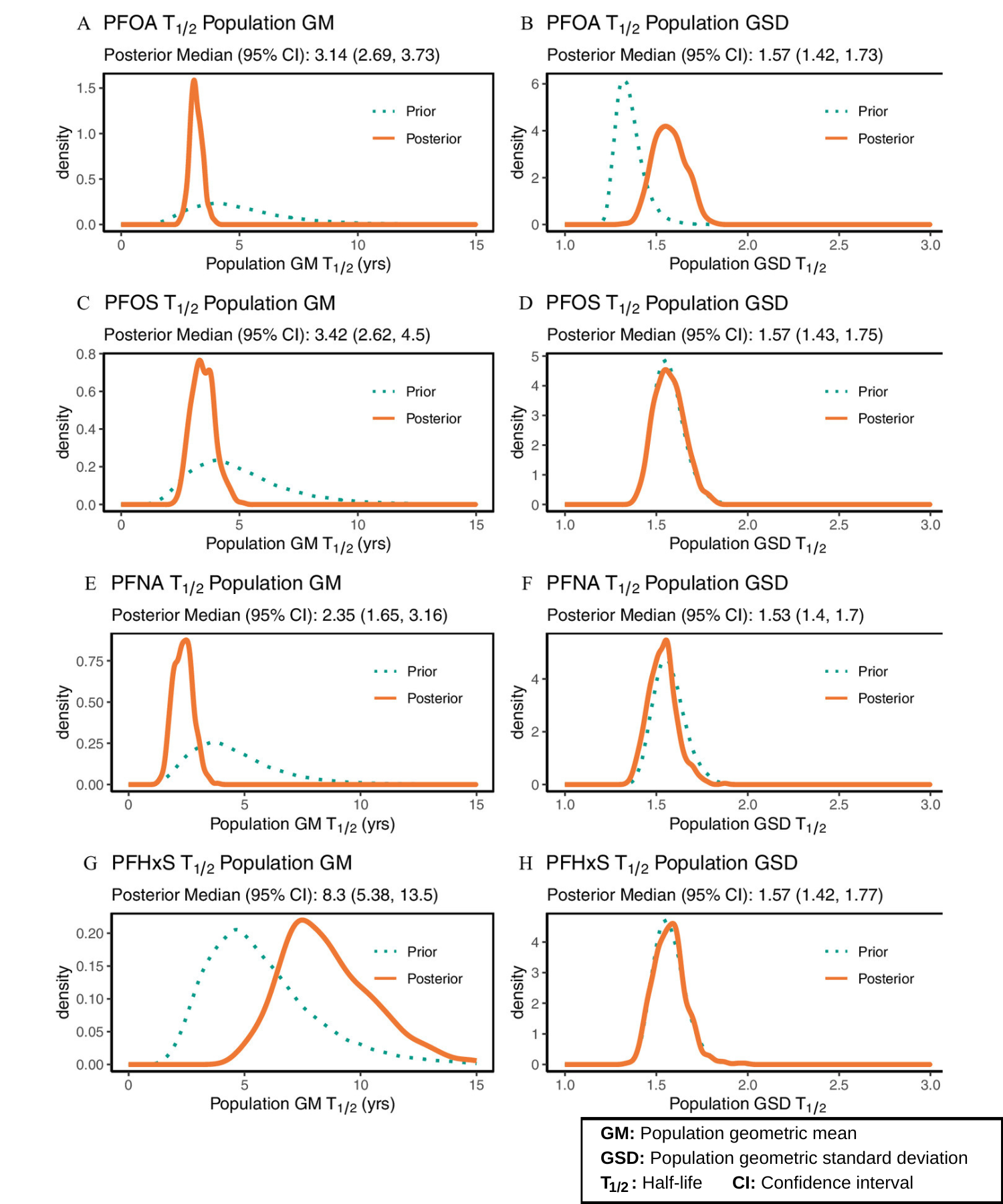Superfund Research Program
New Model Estimates PFAS Exposures From Contaminated Drinking Water
View Research Brief as PDF(738KB)
Release Date: 03/01/2023
![]() subscribe/listen via iTunes, download(7.8MB), Transcript(251KB)
subscribe/listen via iTunes, download(7.8MB), Transcript(251KB)
Researchers partially funded by the NIEHS Superfund Research Program (SRP) developed a model to estimate individual exposure to four per- and polyfluoroalkyl substances (PFAS) commonly found in drinking water. The model integrates published data from multiple studies on PFAS levels in human blood along with measured PFAS concentrations in drinking water. Tools for estimating PFAS exposure from contaminated drinking water can inform public health risk assessments and advisories.
The analysis is the largest to date of its kind, according to the team, which included researchers from the Texas A&M University (TAMU) SRP Center, Abt Associates, and the Agency for Toxic Substances and Disease Registry (ATSDR), part of the Centers for Disease Control and Prevention.
Properties that make PFAS desirable in consumer and industrial products — such as oil resistance and heat tolerance — also contribute to their ubiquity in the environment. Composed of carbon strongly bound to fluorine, PFAS have high water solubility and are uniquely resistant to degradation. As a result, they can accumulate in organisms through inhalation or ingestion, potentially contributing to adverse health effects, such as immune system deficits and reduced fetal development, among other problems.
Digging for Data

Understanding PFAS toxicokinetics — how the chemicals are absorbed, distributed, metabolized, and excreted — is critical to estimating exposure risk. Indeed, some PFAS leave the body in a manner of days or weeks, while others can take years.
A common approach to studying PFAS toxicokinetics is to treat the body as a single compartment defined by two properties: the chemical’s half-life — the time it takes for concentrations to decline by 50% in the blood — and the volume of distribution, representing a chemical’s tendency to remain in the blood or diffuse to other tissues.
For their study, the team, led by TAMU’s Weihsueh Chiu, Ph.D., applied a single-compartment approach to four PFAS found in drinking water, including perfluorooctanoic acid (PFOA), perfluorooctane sulfonic acid (PFOS), perfluorohexane sulfonate (PFHxS), and perfluorononanoic acid (PFNA).
They included studies spanning a wide geography for which details on PFAS drinking water levels and community or individual-level blood concentrations were available. If a given study provided information on blood levels but not drinking water, the team searched for water data that corresponded with the time and location of the study. Given the possibility of PFAS exposures from other sources, they also incorporated information on background exposures, collected from the National Health and Nutrition Examination Survey, for years closely corresponding to the study data.
Next, they randomly divided their data into two sets: one to train the model and the other to test its predictive abilities. To fine-tune the model, they applied Bayesian statistical analysis, an iterative method for finding the values of half-life and volume of distribution that best fit the data across all the studies, while also estimating how much variability there is across a population.
Informing Risk Assessments and Communication

The model accurately predicted test data, which represented many individuals across 13 studies. In addition, the team varied multiple assumptions that went into the analysis, such as which data were used to “train” versus “test” the model predictions. The results were virtually identical under all variations, suggesting that the analysis was robust.
The model predicted an average half-life of 3.14 years for PFOA, 3.36 years for PFOS, 2.35 years for PFNA, and 8.30 years for PFHxS — estimates that were more accurate and precise compared to a wider range of values from previously published studies.
They also found that, for a given individual, PFAS half-life could vary by several-fold. The finding suggests that for the same amount of exposure to a PFAS, the substance might stay in the body much longer in some people, potentially increasing the likelihood of health effects, the authors explained.
Estimates for volume of distribution ranged from 0.19 to 0.43 liters per kilogram across the four chemicals — values that tended to be slightly higher than other published estimates, the authors noted. The higher values indicate that, for a certain concentration of PFAS in the blood, some amount probably diffuses to other parts of the body before getting eliminated, the team suggested.
The study methods can be applied to other PFAS, according to the researchers, and the findings can inform both risk assessment and risk communication. Indeed, their work forms the basis of a new web-based tool, maintained by ATSDR, to help the public estimate personal exposures to PFAS in tap water.
For More Information Contact:
Weihsueh A Chiu
Texas A&M University
4458 TAMU
College Station, Texas 77846-4458
Phone: 979-845-4106
Email: wchiu@cvm.tamu.edu
To learn more about this research, please refer to the following sources:
- Chiu WA, Lynch MT, Lay CR, Antezana A, Malek P, Sokolinski S, Rogers RD. 2022. Bayesian estimation of human population toxicokinetics of PFOA, PFOS, PFHxS, and PFNA from studies of contaminated drinking water. Environ Health Perspect 130(12):127001. doi:10.1289/EHP10103 PMID:36454223 PMCID:PMC9714558
To receive monthly mailings of the Research Briefs, send your email address to srpinfo@niehs.nih.gov.


